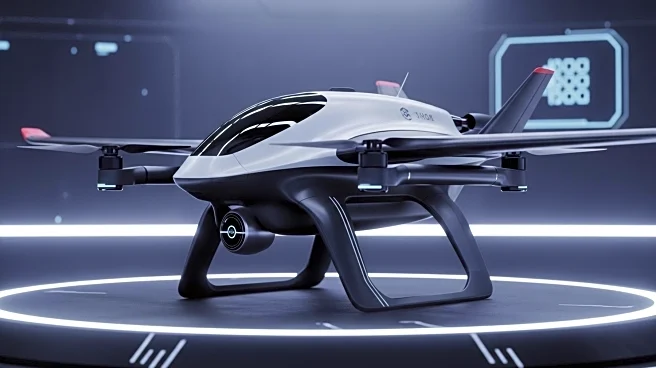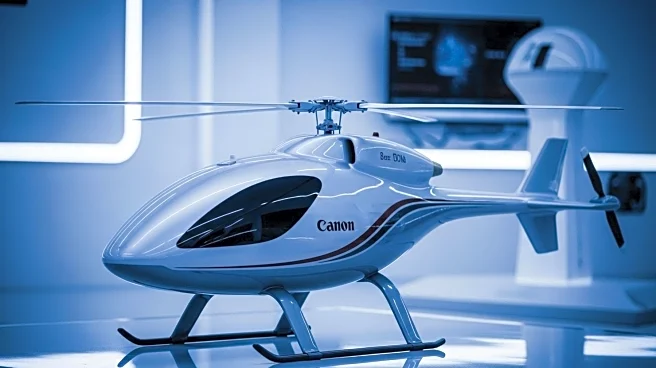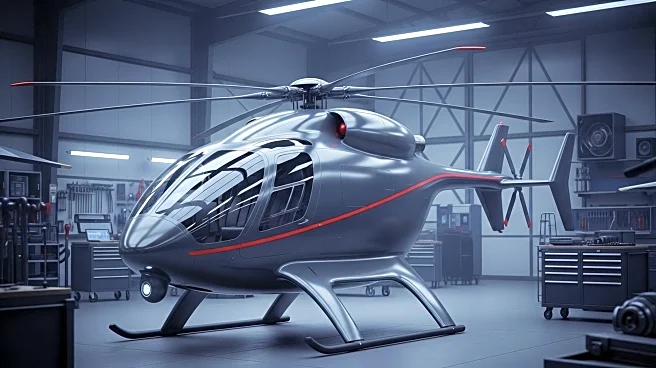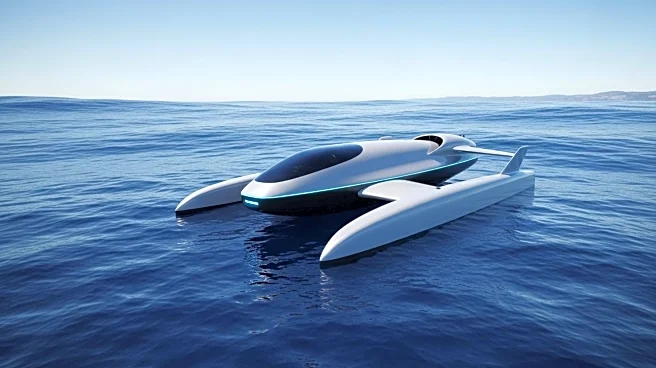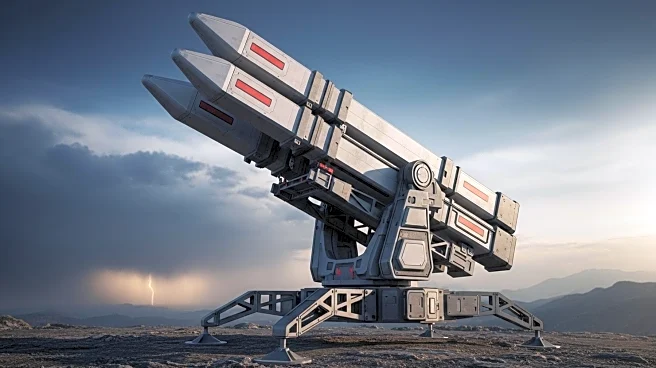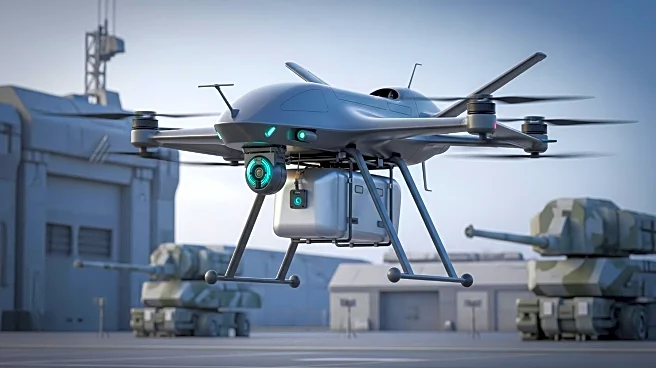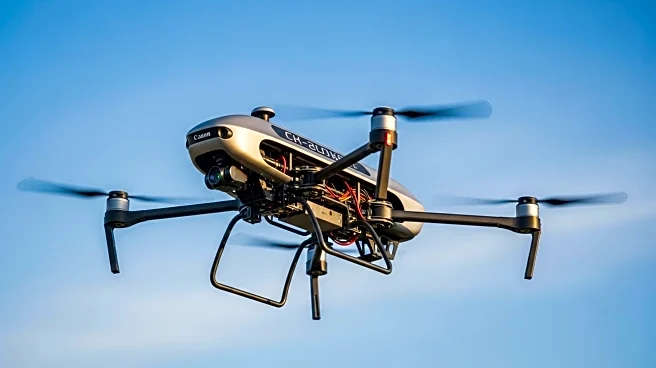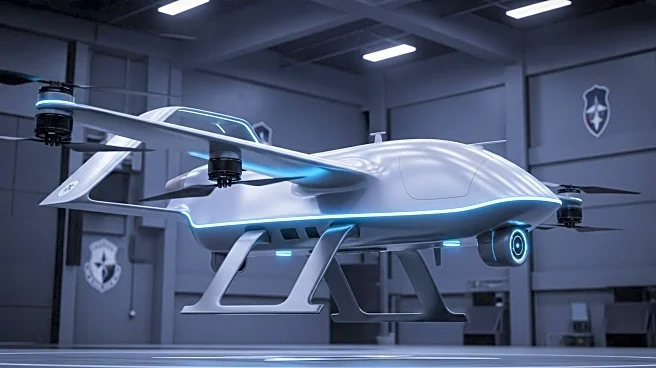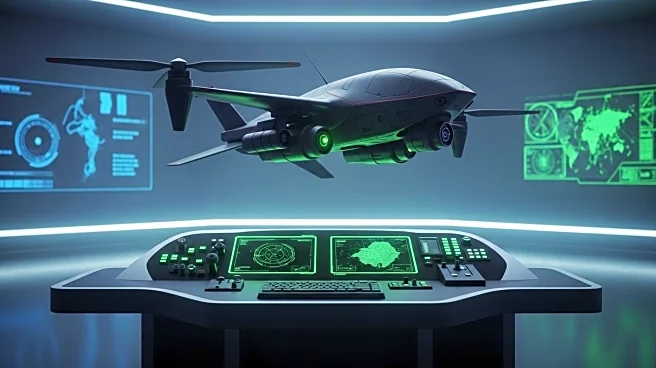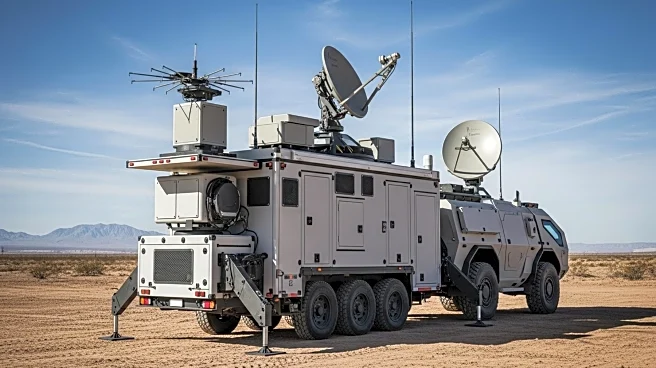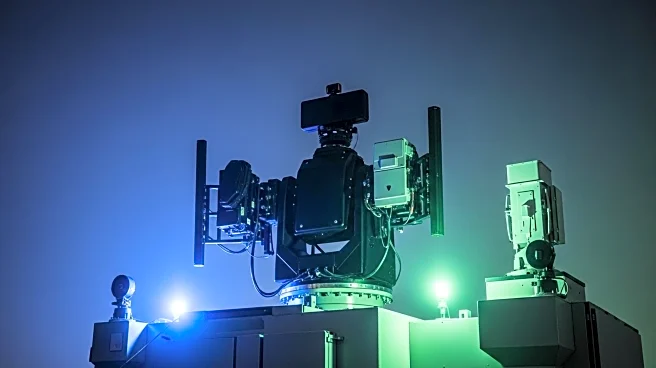What's Happening?
Sikorsky, a subsidiary of Lockheed Martin, has introduced the S-70 UAS, known as the 'U-Hawk', at the AUSA exposition in Washington DC. This prototype is a fully autonomous uncrewed aerial system derived from the UH-60L Black Hawk airframe. The development of the U-Hawk was completed in 300 days, showcasing Sikorsky's rapid innovation capabilities. The U-Hawk is designed to perform tactical utility missions without human pilots, leveraging proven technology to resupply forward forces autonomously. The Matrix autonomy stack, which has been tested extensively, enables the helicopter to operate without a crew, offering significant operational flexibility.
Why It's Important?
The introduction of the U-Hawk represents a significant advancement in military aviation technology, potentially transforming tactical operations by reducing the need for human involvement in dangerous missions. This development could enhance the efficiency and safety of resupply missions, allowing for continuous operations without risking human lives. The U-Hawk's ability to deliver tactical vehicles and supplies autonomously could provide a strategic advantage in military logistics, particularly in conflict zones. As the military adapts to autonomous capabilities, this technology may lead to changes in operational doctrines and strategies, impacting defense policies and procurement decisions.
What's Next?
The U-Hawk is expected to make its first flight in 2026, marking a critical milestone in its development. As the military evaluates the integration of autonomous systems, there may be further testing and demonstrations to assess the U-Hawk's capabilities and reliability. Stakeholders, including military leaders and defense contractors, will likely monitor the progress of this technology closely, considering its implications for future military operations. The adaptation of military culture and doctrine to embrace full autonomy remains a challenge, and ongoing discussions may shape the future deployment of such systems.
Beyond the Headlines
The U-Hawk's development highlights the broader trend towards automation in military technology, raising ethical and legal questions about the role of autonomous systems in warfare. As these technologies evolve, there may be debates about accountability, decision-making, and the potential for unintended consequences. The shift towards autonomy also reflects a growing emphasis on technological innovation in defense, which could influence global military dynamics and competitive strategies.
